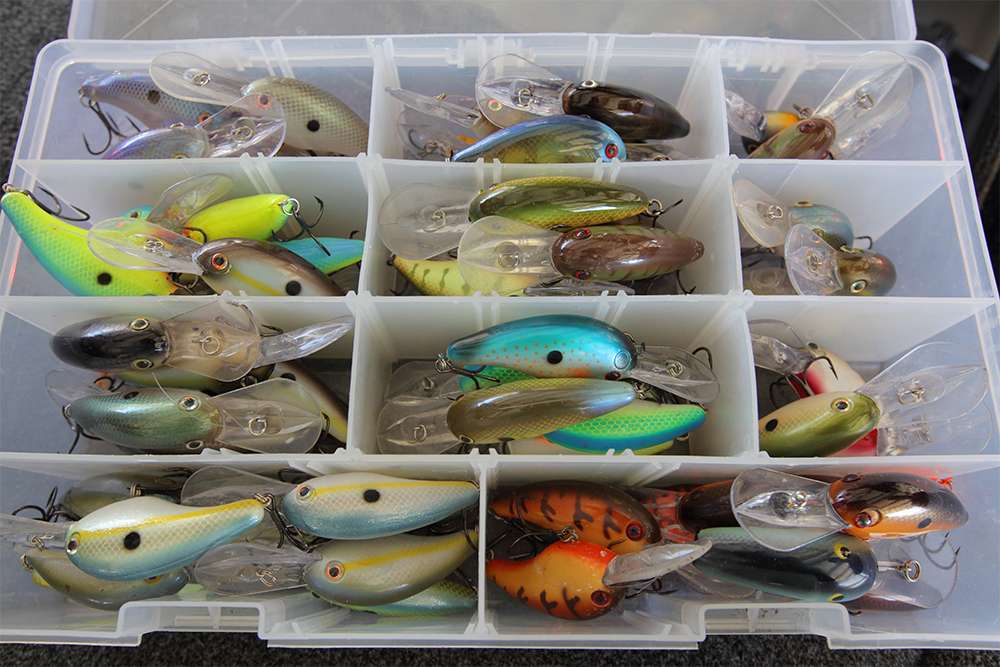
One of the many factors I’ve enjoyed about my relationship with Strike King is my involvement in lure design that I use every day to catch fish.
Company personnel are all serious anglers but they know the importance of using the pros’ knowledge in every step of lure development. The pro staff is deeply involved in lure creation, and we all work as a team to create baits that help us be successful on the competitive circuit. We not only have a say in the design of baits but new colors that are introduced.
I’ve been fortunate to be involved in development of some incredible baits. Good examples are the KVD 1.5 Square Bill crankbait and the Red Eye Shad, each of which helped me win back-to-back Bassmaster Classics.
In fact, it’s no coincidence that some of the baits that the company releases in early spring are introduced at the Bassmaster Classic and targeted to match the conditions and enhance our chances for success at that Classic. We currently have some new stuff in the hopper with next year’s Lake Hartwell Classic in mind.
Designing and creating new baits requires a lot of forethought and planning. I don’t think you will find another company that invests as much time, money and resources in lure development.
Some baits, like jigs, spinnerbaits and some soft plastics are easier and can come quickly. In those cases, it’s about creating sizes, heads and shapes and adding proper and quality components.
Soft plastics can be a little more time consuming because Strike King doesn’t use the same formula for softness and salt content in every bait.
Some of the Strike King lures you are using today took as much as two years to perfect. Not every company does that.
For example, we try to come up with the plastic formula and proper salt content that produces an appropriate action in a soft bait that makes it more appealing to fish. If you get too much, it adds weight and stiffness to the bait. For instance, the Ocho, a soft stick bait, is poured with the “Perfect Plastic” combination that is very soft yet has a high salt content and gives it a good sink rate yet affords the subtle shimmy and action that makes bass bite it. Baits like the Dream Shot and Half Shell are made with softer material that produces the right amount of natural action needed when drop-shotting.
Hard baits are more difficult, expensive and time consuming. Modern technology has improved the prototyping we do in hard baits, but it’s still a long procedure to get a production model of a crankbait to perform identically to a prototype.
It’s a delicate process to mimic the weight, balance and action achieved in prototypes so minute tweaks must be made. Not every company takes the time to do that.
Designing a crankbait to run deep and cast well is easy, but will it dive at a proper angle and deliver that fish-catching action once it hits the bottom? Those are the kind of things we take seriously.
For example, when we designed the 6XD, arguably one of the most popular deep diving crankbaits on the market, we went through eight or nine versions to get the final product we have today. It cost several thousands of dollars for each prototype until we finally got the final version to perform the way it is today.
My role with KVD series baits is to offer input, test and sign off on each step of the process, something I take very seriously as does every other Strike King pro whose name is affiliated with a Strike King signature series baits.
In addition, Strike King uses each pro’s area of expertise; you’ll see Greg Hackney and Denny Brauer’s names on jigs and Mark Davis’ name on a lot of plastics and structure baits.
Not every lure catches fish in every situation. But I can assure you that the baits designed by the Strike King pro staff have had a tremendous amount of testing leading to their development.
Remember, it’s all about the attitude!
Kevin VanDam’s column appears weekly on Bassmaster.com. You can also find him on Facebook, Twitter and Instagram.

